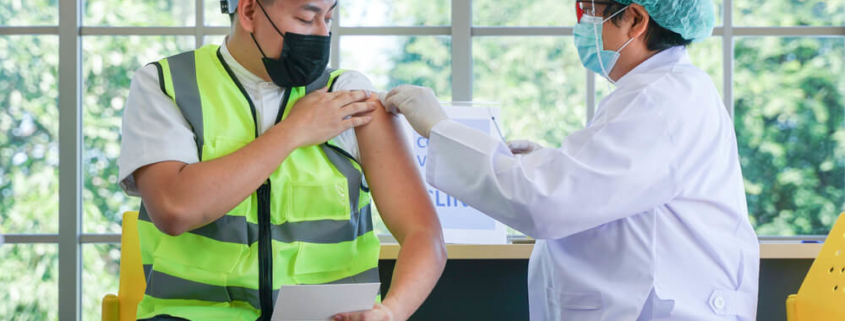Vaccinations and the Workplace
How to handle COVID-19 and vaccine requirements in the workplace is a conundrum many businesses are facing. The Occupational Safety and Health Administration (OSHA) has issued numerous recommendations for employee safety during the pandemic, including guidance for employers in responding to both vaccinated and unvaccinated staff. Here’s an overview of the current rules and regulations related to vaccinations and the workplace.
Are Vaccines Required at Work?
One question that many employees are asking is whether they have to get vaccinated in order to retain their current job. Currently, there is no federal mandate for private-sector employees regarding vaccinations. However, some private-sector employers have required that their employees get vaccinated; others are strongly recommending it or have stated that there will be a vaccine requirement in the future. If you are an employee who has questions about your employer’s specific rules related to getting the COVID-19 vaccine, talk to your employer directly. Your employer may have a vaccine mandate.
Responding to COVID-19 in the Workplace
Many employers are currently not mandating that their employees receive the COVID-19 vaccine. Regardless of your employer’s specific rules, there are many OSHA guidelines related to employers’ response to COVID-19 in the workplace. These recommendations include:
- Allow time for employees to seek a vaccine. Employers should allow their employees time off to seek a vaccine. This should be paid time off. For businesses with fewer than 500 employees, there may be tax credits available if the business provides paid time off for employees seeking the vaccination.
- Tell workers to stay home following potential infection. If an unvaccinated worker has been potentially exposed to the virus, they should be encouraged to stay home from work to risk spreading the infection to others. Any workers who are exhibiting any symptoms of COVID should refrain from coming into the office. See current Centers for Disease Control and Prevention (CDC) guidelines regarding exposure to the coronavirus for more information.
- Mandate social distancing for unvaccinated workers. Workers who are unvaccinated are at a greater risk of contracting the COVID-19 virus. (As a note, there may be other workers in the office who, regardless of vaccination status, are at greater risk of complications from COVID-19 if they do contract the virus. In designing safety protocols, employers should consider the safety of all their employees.) Unvaccinated workers should be asked to socially distance themselves in the workplace to reduce the risk of spread.
- Require face coverings. Employers should encourage all workers to wear facial coverings in the workplace regardless of vaccination status. Facial coverings can help to reduce the spread of COVID-19.
- Ensure that proper safety training and education are made available. One of the most important things that employers should do is to prioritize education about the spread of the virus and the potential side effects of COVID-19. Proper training on safety protocols for facial coverings, social distances, sanitization, and other COVID-19 safety measures is also key. It is important that education and training are made available in employees’ own language.
- Suggest the use of face coverings for customers. Private businesses have the option of mandating facial coverings for customers. However, it is recommended that all persons wear facial coverings in the workplace, regardless of vaccination status. The new delta variant of COVID-19 is highly contagious and wearing a mask, even if you’re vaccinated, may provide additional protection against the virus, particularly when indoors.
- Maintain strong ventilation systems. One thing that can help reduce the spread of COVID-19 in the workplace is a strong ventilation system. A strong ventilation system can help to reduce the concentration of particles of the virus inside. Be sure to install filters with a minimum MERV rating of 13 or higher.
- Report COVID infections and deaths. As an employer, it is necessary that you report any COVID infections and deaths, as mandated under OSHA rules found in 29 CFR 1904. Tracking work-related cases of COVID-19 may help to track and stop the spread of the disease. Consult with a professional if you have more questions about reporting requirements.
Learn More from OSHA Injury Lawyer Today
Navigating the many rules regarding COVID-19, safety in the workplace, and vaccine requirements can be confusing for both employers and employees. If you have questions about the laws and recommendations regarding vaccines in the workplace, it’s important to turn to an authority on the topic. OSHA Injury Law can help to answer your questions and refer you to professionals. Contact us today and we will recommend an experienced OSHA accident attorney.




Leave a Reply
Want to join the discussion?Feel free to contribute!